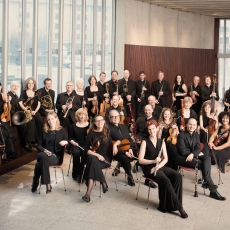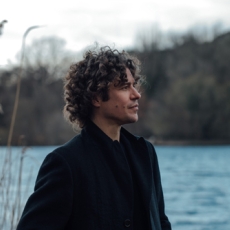Robin Ticciati & SCO - Haydn: Symphonies 31, 70 & 101 - MusicWeb International
Robin Ticciati made Haydn one of the focuses of his 2014-15 season with the Scottish Chamber Orchestra. This CD captures - in the studio - some of the results. Here, we get three D major symphonies from, roughly, the beginning, middle and end of his career, showing composer, orchestra and conductor at their very best.
The partnership between Ticciati and the SCO has blossomed into one of the most exciting in music, and I don't just mean in Britain. Ticciati has built up tremendous trust with this outstanding group of musicians, to the extent that it seems that they would follow him anywhere. The warmth, affection and mutual loyalty of their playing comes across in every performance. So it is here. No. 70 and No. 101 were both performed as part of the SCO's concert season, and the same things appeal to me on disc as appealed to me in the flesh: namely the vivacity of the sound, the clarity of the articulation and the excitement of the music-making. The SCO play with (mostly) modern instruments but period inflections, and that adds something very special to their Haydn sound. Listen, for example, to the slow introduction of the "Clock", where the winds sound more open and transparent than usual, or the beginning of the Allegro where the string sound has a tiny touch of abrasion to it, enough to make you realise something special is going on but not so much as to make the sound ugly. Throughout this first movement, Ticciati's touch is utterly sure, controlling the unfolding argument with a light but flexible hand, and the use of natural brass and timpani gives a special touch of colour to the tutti moments which are, nevertheless, never overdone. His tempi tend to be on the fast side, something particularly noticeable in the slow movements, but that adds to the freshness and the sense of something exciting. I loved the way the "Clock" finale unfolds with quiet purpose and determination.
No. 70, an unusual symphony in its variety of mood, benefits from similar vivacity and flair in its first and third movements, but the second and fourth sound oddly as though a veil has been cast over them and Haydn's temperament has become more morose. The Andante, in particular, benefits from that string sound, as though it's only a hair's breadth from becoming a funeral march. No. 31 wasn't performed last season, but it's a great choice to include as it showcases the SCO's first rate horn section at their best. Just listen to that opening "Hornsignal" to feel yourself blown away by the raw freshness and variety of the sound, the raucousness of the opening fanfare (on natural horns) leading into an implausibly lyrical, Alpine top note that crests the score magnificently. In the slow movement the humorous feel of a village band is never too far away, in a very winning touch. The Menuet feels like a genuine dance. The variations of the finale give lots of other orchestral parts the chance to shine individually, demonstrating that this is a community achievement from a communal team. As I said, a brilliant musical partnership.


